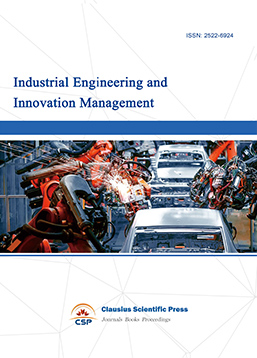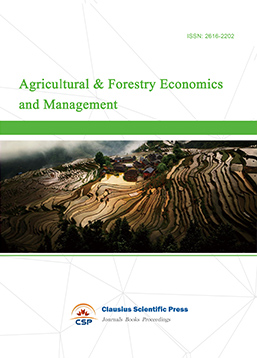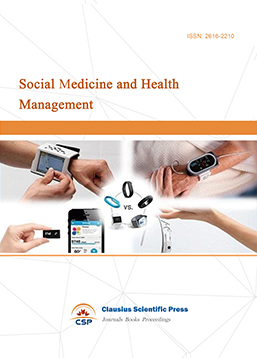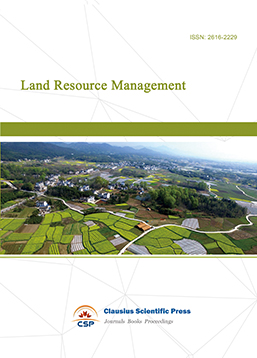Research on Risk Strategy of Mutual Aid Pickup Platform on Agricultural University
DOI: 10.23977/msom.2023.040509 | Downloads: 83 | Views: 2519
Author(s)
Wenjie Song 1, Meijiao Ding 1, Chunxue Yu 1, Jixin Zhao 1, Yingchao Song 1, Bo Yu 1
Affiliation(s)
1 School of Economics and Management, Heilongjiang Bayi Agricultural University, Daqing, China
Corresponding Author
Bo YuABSTRACT
In today's society, the network economy is developing rapidly, and the service mode of the express delivery industry is constantly upgrading under the development of the network economy. The express delivery industry plays a huge role in connecting college students to the participation process of the network economy, and a huge express delivery market has emerged on campus. Due to the limited nature of express delivery resources on college campuses, the express pickup industry has gradually appeared on major campuses, and the express pickup industry will also adapt to the development of the network economy and become increasingly prosperous. Mutual aid pickup is a major innovation of the traditional equivalent exchange and substitution model. At present, the campus express pickup industry has formed a certain operation mode, which has played a role in solving the "end kilometer" problem of express delivery. "Agricultural University" is the abbreviation of Heilongjiang Bayi Agricultural University. Based on the analysis of the current situation of the campus express pickup industry of Heilongjiang Bayi Agricultural University, this paper will carry out a feasibility analysis of the campus express mutual aid pickup platform, study the risks of the mutual aid pickup platform from multiple angles, and propose solution strategies from multiple dimensions such as platform management and operation.
KEYWORDS
Campus express delivery, pick-up platform, mutual aid, riskCITE THIS PAPER
Wenjie Song, Meijiao Ding, Chunxue Yu, Jixin Zhao, Yingchao Song, Bo Yu, Research on Risk Strategy of Mutual Aid Pickup Platform on Agricultural University. Manufacturing and Service Operations Management (2023) Vol. 4: 68-73. DOI: http://dx.doi.org/10.23977/msom.2023.040509.
REFERENCES
[1] Shang H. X. (2014). Discussion on the new mode of campus express delivery of Harbin University of Commerce. Enterprise Reform and Management, (08), 146.
[2] Shen Y. J. (2018). Research on legal and risk prevention and control of campus express collection service: a case study of Jiangsu University. New West, (18), 62-65.
[3] Tang Y. H. (2019). Analysis and research on the application prospect of "zero distance" express delivery. Science & Technology Vision, (18), 156-158.
[4] Wan Y. X., & Cui X. Y. (2022). Analysis of campus express APP project based on Internet mode. Tech Style, (04), 20-22.
[5] Wang H. (2021). Feasibility analysis of "last 100 meters" paid substitution of campus express. China Storage and Transportation, (09), 140-141.
[6] Wu L. X. (2019). New scheme and feasibility analysis of campus express delivery market economy from the perspective of e-commerce. Shopping Mall Modernization, (16), 67-68.
[7] Wu S. H., & Gan X. F. (2017). Feasibility analysis and strategy of express delivery on university campus: a case study of Longyan College. Journal of Longyan University, 35 (04), 112-117.
[8] Xu H. W. (2017). A brief analysis of the economy of running errands on college campuses. Modern Economic Information, (11), 333-334.
[9] Xu Q., & Zhao P. P. (2020). Feasibility analysis and strategy of express delivery on university campus: a Case study of Henan institute of technology. Business News, (28), 1-3.
[10] Yang Q. H., & Zhang Y. (2020). Exploration of new express delivery model under sharing economy: taking "you help me take" shared express pickup platform as an example. Shanxi Agricultural Economics, (13), 142-144.
[11] Zhao F. (2022). Research on countermeasures for the development of campus crowdsourcing logistics platform. Logistics Engineering and Management, 44 (03), 18-20.
| Downloads: | 6627 |
|---|---|
| Visits: | 196399 |
Sponsors, Associates, and Links
-
Information Systems and Economics

-
Accounting, Auditing and Finance

-
Industrial Engineering and Innovation Management

-
Tourism Management and Technology Economy

-
Journal of Computational and Financial Econometrics

-
Financial Engineering and Risk Management

-
Accounting and Corporate Management

-
Social Security and Administration Management

-
Population, Resources & Environmental Economics

-
Statistics & Quantitative Economics

-
Agricultural & Forestry Economics and Management

-
Social Medicine and Health Management

-
Land Resource Management

-
Information, Library and Archival Science

-
Journal of Human Resource Development

-
Operational Research and Cybernetics


 Download as PDF
Download as PDF